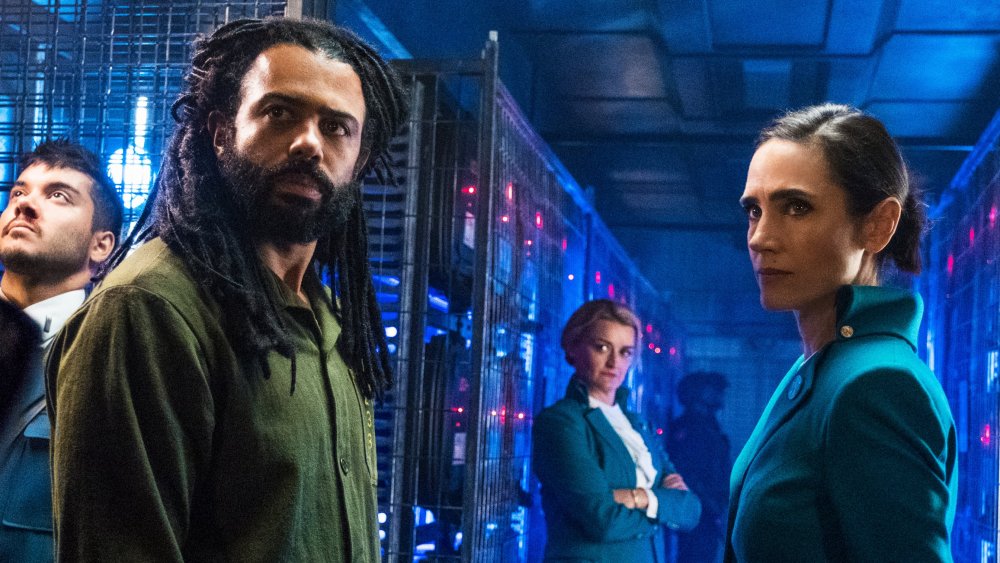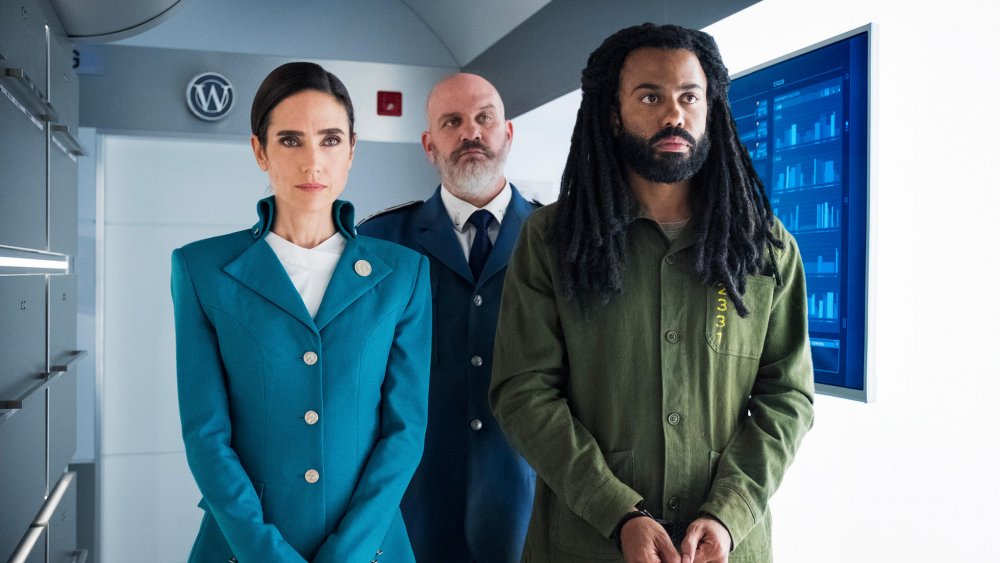How The Snowpiercer TV Series Sets Itself Apart From The Movie - Exclusive
TNT's upcoming series Snowpiercer, premiering May 17, is a show that's based on a movie that's based on a graphic novel. Each adaptation tells its own cautionary post-apocalyptic tale, with the TV series loosely sticking to the crux of the story while creating new characters and plots that don't exist anywhere else.
The 2013 cult film Snowpiercer — directed by Oscar-winner Bong Joon-ho and starring Chris Evans, Tilda Swinton, and Ed Harris — takes place 17 years after a major climate disaster created another ice age on Earth; the last remnants of society have to circle the globe on the Snowpiercer train in order to survive. With 1,001 cars and 3,000 passengers, the Snowpiercer is a microcosm of the world's class system: The wealthiest are up front, leading the most leisurely and extravagant lives; the middle class have more meager accommodations and must work to survive; and the lowly stowaways make up the occupants of the claustrophobic "tail," where people resort to cannibalism before the God-like train conductor starts feeding them gelatinous "protein bars" secretly made out of bugs. When the lower class has had enough, they organize a revolt, planning to charge through the heavily armed train cars and seize control of the engine.
While the movie is a fast-paced, laser-focused tale of a revolutionary (Evans' Curtis Everett) hell-bent on making it to the engine room, the TV series — starring Jennifer Connelly and Daveed Diggs — has a lot more time to expand on the story and fill in the blanks.
In an exclusive interview with Looper, Snowpiercer showrunner Graeme Manson (Orphan Black) talked about the inspiration behind the small-screen adaptation and how the series sets itself apart from the movie.
Action-adventure is at its core, with constant surprises behind every door
"The Snowpiercer series is really its own animal," Manson admits. "Director Bong's movie is one of the craziest action movies I've ever seen, and it packs so much message and political punch. Then the graphic novels span a lot of time and have a lot of different ideas and characters in them. I felt that a TV show could create something that would compliment the whole thing [with] great character stories and a higher concept. Yet, at its core, it's an action adventure — fun, edge-of-your-seat-type stuff. That's what I like."
Technically a prequel, the Snowpiercer series takes place 10 years before the movie — or, in other words, seven years after the ice age freezes over the Earth. The characters are just as haggard and defeated, but they're not quite ready for a major revolt. It's more about character development and bold new plots.
As Manson explains, "Obviously, in a TV series, you can't just start in the tail and move to the engine. We want to get to know people in first and second class, understand the train's rules, and begin to understand what the classes have in common, not just the differences they have in terms of privilege. One thing they have in common is grief and the trauma of losing the world, and the guilt of losing everyone they know."
While the series is a lot different from the film, it still keeps some of the nuances intact, like discovering what each train car houses.
"The fun part of the series is imagining a world that we can introduce the audience to," Manson says. "I wanted to start off like the movie, where you enter from the tail, so that everything the audience sees is new. I love that aspect of the film, where you could open a door and find anything. There was always a sense of discovery. So, in the series, there's the constant possibility to wow the audience with what's next."
Snowpiercer premieres on TNT on Sunday, May 17.

